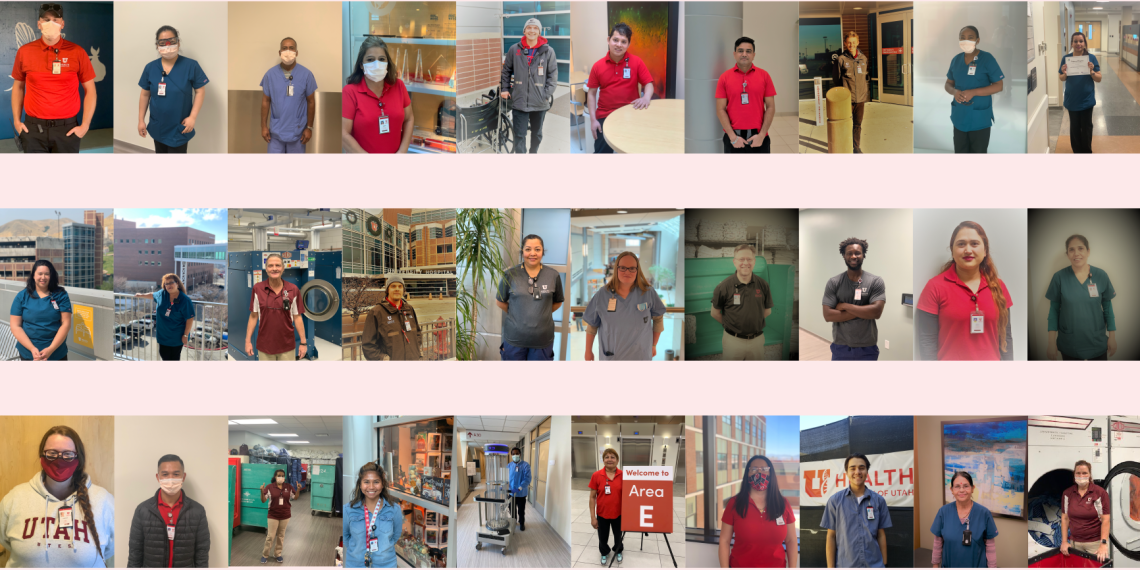wife, who is a nurse, works with one of my former employees. She told me that one day she decided to ask him what it was like working for me.
“What was it like to work for my husband?" she said. He responded, "Well, I don't really know. He's kind of closed, he's not very approachable. He doesn't come across as very friendly.”
The feedback stung, but it made me recognize that if I truly want to connect with people, I had to change my approach. A year ago, I implemented the Employee Spotlight program.
Learning through story
The genesis of this project was to get to know my employees better. My service lines are an eclectic group. I manage over 340 full-time employees, spread out over 2.5 million square feet, running a 24/7 operation. Since my teams work all over the place, I don’t see them as often as I’d like. I’d incorporated rounding into my daily routine for years but, honestly, I wasn’t that good at it. I’d fall into superficial how’s-the-weather-type conversations. I knew that, to build trust, I needed to forge more meaningful relationships with my staff.
The program is simple: I meet with my employees one-on-one to get to know them better, then write up a short bio for the loop screen outside my office the following week. This way, not only can I learn a little bit more about them, but they can also learn more about each other. I rely on supervisors from our twelve different teams to send employees my way.
I give them two ground rules. First, don’t tell me anything that you don’t want everybody to know. Second, the floor is yours–tell me what it is that makes you, you.
Initially, I faced general mistrust: “What does he really want? What is he trying to do here?” I had to overcome that self-built barrier, because while I knew everything about their productivity reports, quality reports, and uniforms, I didn’t know anything about their lives outside of work. To help build that trust I had to be vulnerable and share my own stories with them. Easy conversations about families, pets, hometowns and hobbies helped trigger progress.
The impact
I now connect with my employees in a more significant way. When I'm rounding, I’ll see an employee who told me they're a Jazz fan. I’ll say, "What did you think about what Shaq said about Donovan Mitchell?" We’ve opened up a forum for more genuine conversation.
I think it’s also benefiting other employees. Sometimes I’ll walk out of my office and see three custodians standing by the screen, reading about a coworker. It’s an opportunity for them to learn about each other and relate to their colleagues based on specific interests. We’ve started incorporating native languages into the slides so when employees walk by, they can say, “That’s my language–that’s part of who I am!”
We have people from all over the world working together. One employee traveled two full days to get here from Burma. During Environmental Services Week, we hung a map of the world in the break room and encouraged the staff to place a star where they were born. I counted 23 different countries.
At the same time, we’re recognizing how much we all have in common. Cooking is a common interest. I am looking forward to international potluck lunches post-Covid. There’s also a lot of outdoor enthusiasts among us who enjoy hiking and kayaking.
I’ve encountered people traveling through different cycles of life. I asked one employee, who’s been with us for 22 years, if I could interview her. She looked at me and said, "I'm retiring today." It was perfect timing–I got to visit with her as she said her goodbyes. During an interview with one of our valets, I discovered he was finishing school. I was able to congratulate him on his graduation day.
"More than anything, this program has helped me realize that our organization is truly a family. We’ve uncovered a diverse community of people who want to share their experiences with each other."
Advice for peers: “Take the feedback”
After that inadvertent feedback from my former employee, I won’t say I didn’t sulk a little. But it made me recognize I needed to step up as a leader; that a little humility could go a long way. I began focusing on what I needed to hear, not what I wanted to hear.
Ultimately, it reminded me of the power of listening. I'm a storyteller–I tend to talk more than I listen. This program has helped me to stop and listen to who other people are. I know everything about me, but I don't know everything about other people.
When you embark on a project, people ask two things. First: Is it worth your time? For me: Yes, absolutely. This program has brought me closer to my employees by teaching me the importance of authenticity.
Second: What are the deliverables? Sure, this program might boost employee engagement and reduce turnover rates. But it also fosters something you won’t find in a productivity report: a deeper sense of community and inclusion.
*Originally published March 2021
Chris Shirley
Effective recognition is key to engaging your team in the increasingly tough work we ask them to do. Luckily, we have an expert to guide us. HR’s senior director of employee experience, Christian Sherwood shares how you can better recognize your team – starting today.
Sometimes insights from work can be helpful at home. We’re putting four expert tips for creating a compassionate workplace to the ultimate test: conversation at your Thanksgiving table.
Employees in high-trust organizations are happier, more collaborative and stay at their jobs longer. But what builds long-term, sustaining trust? Director of strategic initiatives Chrissy Daniels highlights findings from an article in Harvard Business Review. The answer: Eight behaviors.
